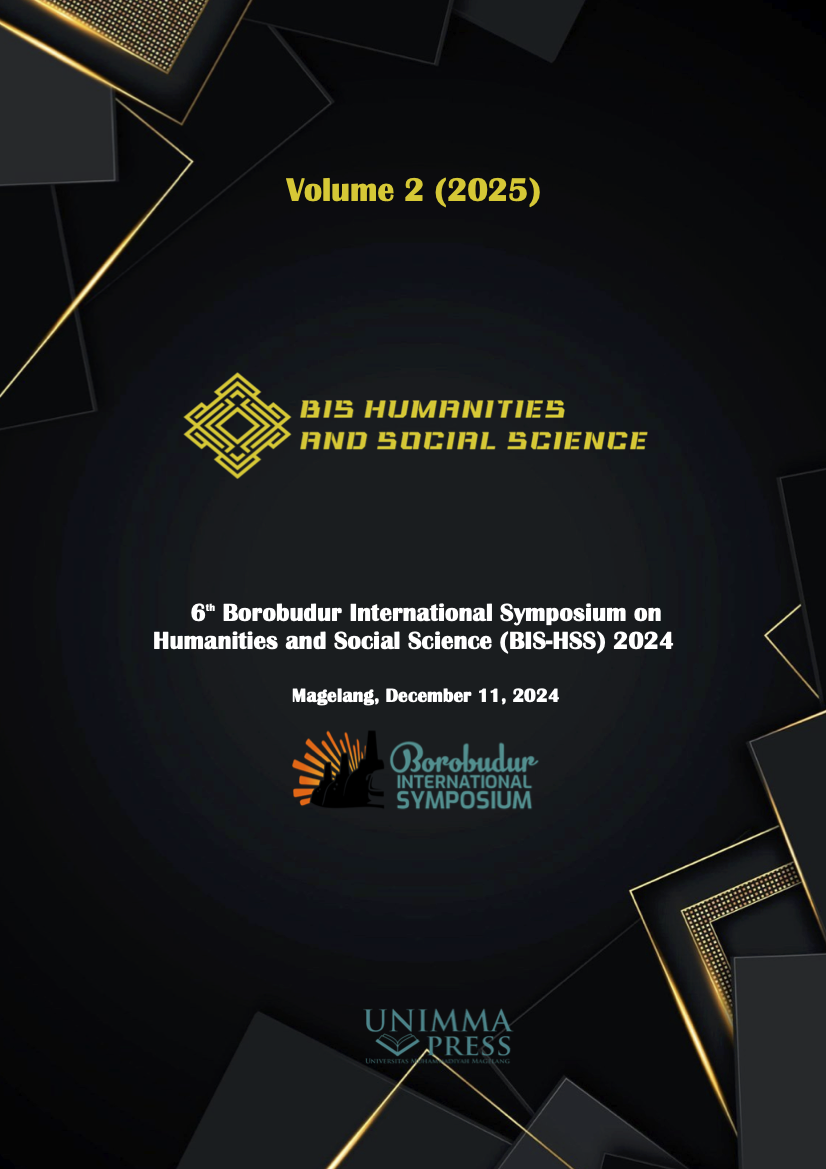Development of Islamic religious education concepts in creating excellent and Islamic generation: A study on PAI students at Universitas Muhammadiyah Magelang
Keywords:
Competence, Islamic religious education, Excellence, Digital eraAbstract
This research originates from the vision and mission of the Islamic Education (PAI) at Universitas Muhammadiyah Magelang, which aims to produce future educators in Islamic studies with excellent teaching competencies and an Islamic character. This study has three main objectives. To analyze strategies in Islamic Education to develop students with excellence in knowledge, covering personal, pedagogical, professional, and social competencies in the digital era. To examine the implementation of Islamic Education in shaping students' character and Islamic behavior. To develop a conceptual framework to advance Islamic education in order to produce outstanding and Islamically oriented graduates. This study employs a qualitative approach conducted. The research subjects include program leaders, lecturers, and PAI students. The sampling technique used is purposive sampling. Data collection is carried out through observation, interviews, and documentation, which are then qualitatively analyzed through four stages: data collection, data condensation, data presentation, and conclusion drawing/verification. The research findings indicate: The strategies of the PAI Study Program in developing excellent students are implemented through curricular, co-curricular, and extracurricular activities. The implementation of Islamic Education faces several challenges, including low student motivation, a teaching approach that tends to be dogmatic and textual, the dominance of lecture-based methods, course materials that do not fully align with students' needs and abilities, a campus environment that has not yet fully established a culture of excellence and achievement, and an evaluation system that focuses more on cognitive aspects without concrete follow-up actions.
References
[1] Ramayulis, Metodologi Pendidikan Agama Islam (Cet. Ketuj), Cetakan 7. Bandung: kalam Mulia, 2012.
[2] M. Zuhdi, “Challenging Moderate Muslims: Indonesia’s Muslim Schools in the Midst of Religious Conservatism,” Religions, vol. 9, no. 10, p. 310, 2018, doi: https://doi.org/10.3390/ rel9100310.
[3] SRI LASTUTIK and S. Minarti, “Problematika Pendidik dan Tenaga Kependidikan Islam di Bojonegoro,” AL-AUFA J. Pendidik. DAN Kaji. Keislam., vol. 6, no. 01, pp. 34–53, Jun. 2024, doi: 10.32665/alaufa.v6i01.2998.
[4] Z. Sesmiarni, I. Iswantir, I. Ikhsan, and Y. Yasmansyah, “Analysis the Ability of Islamic Education Teacher in Comprehending the Procedure to Make Learning Evaluation,” AL-ISHLAH J. Pendidik., vol. 14, no. 4, pp. 6113–6128, Sep. 2022, doi: 10.35445/alishlah.v14i4.2248.
[5] Hosaini, A. Z. Fitri, and A. Badruzaman, “Integrative Learning Design Innovation in Islamic Religious Education Subjects in improving graduate competency through an Independent Curriculum.” Oct. 10, 2024. doi: 10.21203/rs.3.rs-5205013/v1.
[6] M. Arif, M. K. N. A. Aziz, and M. A. Ma’arif, “A recent study on islamic religious education teachers’ competencies in the digital age: a systematic literature review,” J. Educ. Learn., vol. 19, no. 2, pp. 587–596, May 2025, doi: 10.11591/edulearn.v19i2.21311.
[7] Septiani Selly Susanti et al., “Innovative Digital Media in Islamic Religious Education Learning,” J. Pendidik. agama Islam, vol. 21, no. 1, pp. 40–59, Jun. 2024, doi: 10.14421/jpai.v21i1.7553.
[8] M. S. As-Tsauri and M. Islamiati, “Increasing students’ information literacy and creative thinking in Islamic religious education learning through reading, questioning, and answering learning strategy,” HUMANIKA, vol. 24, no. 2, pp. 141–150, Sep. 2024, doi: 10.21831/hum.v24i2.71743.
[9] H. Hamzah and N. Nur’aini, “The Effect of the Simulation Method on Creative Thinking Ability and Basic Teaching Ability of Islamic Religious Education Students,” Al-Tadzkiyyah J. Pendidik. Islam, vol. 15, no. 1, p. 71, May 2024, doi: 10.24042/002024151678700.
[10] T. Pransiska, “Pendidikan Islam Transformatif Syeikh Nawawi Al-Bantani: Upaya Mewujudkan Generasi Religius-Saintifik,” J. Ilm. Didakt., vol. 18, no. 2, p. 172, Jul. 2018, doi: 10.22373/jid.v18i2.3241.
[11] I. M. Al Mubarok, P. Rahayu, I. Pratiwi, Z. A. Jauhari, and A. K. Inayah, “Pengembangan Berpikir Kreatif pada Pembelajaran PAI dalam Menghadapi Tantangan Pendidikan Islam Menuju Society 5.0,” IJoIS Indones. J. Islam. Stud., vol. 4, no. 1, pp. 9–16, Jun. 2022, doi: 10.59525/ijois.v4i1.194.
[12] and J. S. M B Miles, A M Huberman, Qualitative Data Analysis: A Methods Sourcebook, Third Edit. SAGE Publikasi, 2014.
[13] M. R. Braun, P. Walton, S. B. M. Beck, and W. London, “Illustrating the relationship between the coefficient of performance and the coefficient of system performance by means of an R404 supermarket refrigeration system,” Int. J. Refrig., vol. 70, pp. 225–234, 2016, doi: 10.1016/j.ijrefrig.2015.10.020.
[14] Z. Ma, H. Bao, and A. P. Roskilly, “Thermodynamic modelling and parameter determination of ejector for ejection refrigeration systems,” Int. J. Refrig., vol. 75, pp. 117–128, 2017, doi: 10.1016/j.ijrefrig.2016.12.005.
Downloads
Published
Conference Proceedings Volume
Section
License
Copyright (c) 2025 Subur Subur, Imron Imron, Akhmad Baihaqi (Author)

This work is licensed under a Creative Commons Attribution-NonCommercial 4.0 International License.

